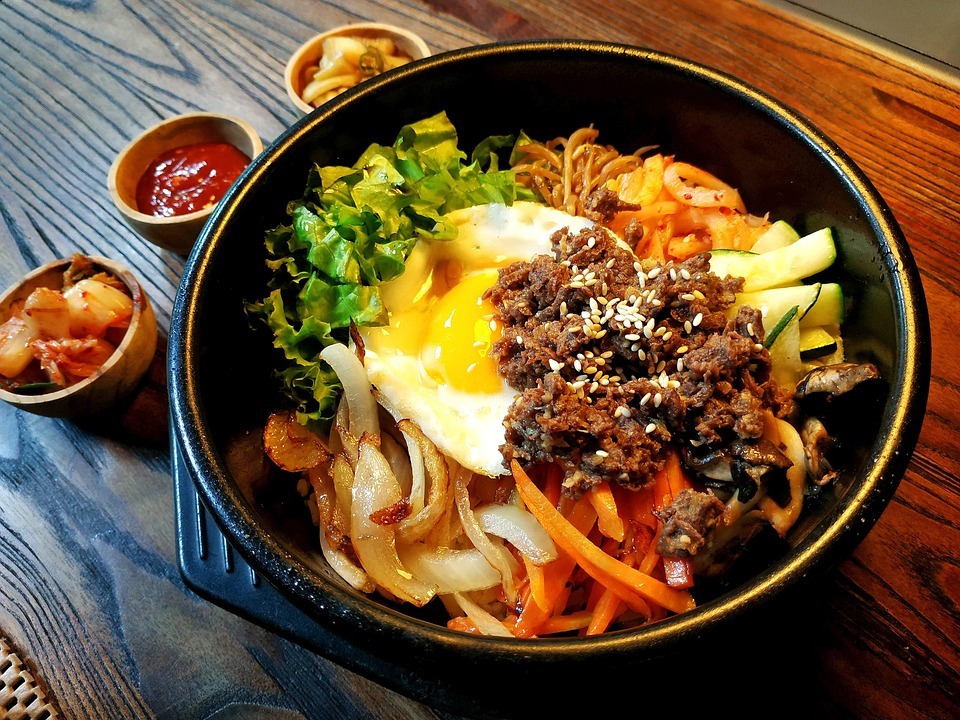The world is well acquainted with Korean technology, Korean cosmetics, and medicine. And if you want to delve deeper into the amazing culture of the Morning Light country, you should start with its cuisine. Some meals from this country can become your whole lunches and dinners, while others are great snacks to eat while watching K-dramas, enjoying live betting opportunities, or chatting with friends. Of course, Koreans love spicy food, but you’ll find other dishes on our list that delight you with their simplicity and taste.
Kimchi (김치)
No Korean meal is imaginable without sauerkraut. Kimchi is more than food: it’s a ritual and a special culture, which, incidentally, is included in the UNESCO list of Intangible Cultural Heritage of Humanity. Double fermentation in brine not only provides the right spicy taste but also saturates kimchi with lactic acid bacteria. This is why kimchi is the key to health and longevity.
Sollonthan (설렁탕)
This soup is cooked from the bones and meat of an ox, and boiled for about 10 hours. As a result, the broth acquires an unusual white color and rich flavor. The soup is served with pieces of meat, onions and garlic, and must be sprinkled with a pinch of green onion. It’s believed that the soup tastes best by midnight and is often served at restaurants at that time.
Bibimbap (비빔밥)
This unpretentious dish is essentially a mix of several ingredients. In Korea, bibimbap is often served for lunch on an airplane. It includes rice, roasted vegetables, beef, and mushrooms, all dressed with soy sauce and pepper paste and garnished with a fried egg. The ingredients may vary from place to place, but the beauty of the dish remains the same – it’s simple, delicious, and hearty!
Sundubu Chige (순두부 찌개)
It’s most correctly called a soft stew: the consistency of the dish is thicker than soup and less dense than porridge. The main secret of Sundubu Chige is the clay pot, in which the stew soaks up the wonderful flavors of fish, meat, seafood, vegetables, mushrooms, and Gochujang paste. The stew must also contain tofu cheese, which provides the stew with a soft and tender texture. The dish is eaten with boiled rice and spicy snacks.
Samgyetang (삼계탕)
This magical summer soup is made with chicken, rice, garlic, dates, ginseng and spices. That’s not a paradox at all – hot and spicy soup is a good escape from the debilitating heat. However, it will be just as useful in the gloomy fall, when the immune system needs a boost. The chicken is stuffed with rice, garlic, and dates, then cooked in broth until tender and served in a large bowl with topping and green onions. And one chicken is one serving.
Hobakjuk (호박죽)
Sweet pumpkin porridge with rice is something Koreans eat for breakfast. By the way, the dish was praised by actress Megan Fox. Hobakjuk has a nice grainy consistency and subtle flavor, and is delicious both hot and cold. The porridge is quite light, which is especially good for people who don’t like heavy foods.
Hottok (호떡)
A delightful treat that is often called pancakes on the streets in Korea, but they are essentially crispy fried tortillas with a soft filling of crushed nuts, honey, and cinnamon. The wonderful taste and enchanting aroma of hottoks will be remembered for a long time, and you’ll probably want to make this dish for your family.
Galbi (갈비)
Galbi is fried pork ribs with onions. It seems to be simple, but the secret lies in a special marinade. It has a surprising sour-sweet-spicy taste: besides soy sauce and corn syrup, fruit puree from apples, pears or citrus is added here. Garlic, pepper, and ginger provide just the right degree of hotness.
Bulgogi (불고기)
Another type of Korean barbecue, this time made from marinated beef, often called fire beef. The marinade uses soy and sesame sauce, plum juice, and seasonings. Thin long slices of bulgogi are wrapped in lettuce and seasoned with pepper paste. Crazy experience guaranteed!
Japchae (잡채)
In the 17th century, Japchae was considered an imperial snack, and today it’s a favorite dish of Koreans. Vegetables, mushrooms, and herbs mixed with starchy noodles are served at weddings or birthday parties, and can serve as both an appetizer and a main course. And when served cold, Japchae doesn’t lose its flavor or its pleasant chewy texture.
Tteokbokki (떡볶이)
The iconic rice sticks soaked in a spicy and spicy sauce are a popular Korean fast food. The secret to success lies in the fact that the rice itself has a bland taste, so it absorbs the flavor and aroma of the gravy. The delicate texture of Ttok sticks is pleasant. You can add meat or fish, vegetables, boiled eggs, tofu, and herbs to Tteokbokki, creating your own lunch or dinner.
Guksu (국수)
The soup is made with Muri broth: water, soy sauce, vinegar, and spices are not boiled but infused cold. The “filling” of the soup is Chumi salads: cooked meat, finely chopped vegetables, and egg pancakes. The chumi is then poured into bowls and served with a spicy and sour broth. The soup is flavored with onion, garlic and pepper.
